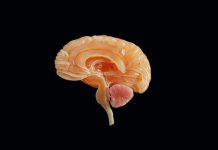
Despite decades of advances in the understanding of Alzheimer’s disease (AD), a blood test for predicting its risk remains elusive.
Imaging scans of the brain and lumbar punctures that collect cerebrospinal fluid can offer diagnoses, but such tests are expensive and cumbersome for patients.
In a new study, researchers developed a blood test for a fragment of the protein tau, a hallmark of AD.
The test for levels of N-terminal fragment of tau (NT1) was evaluated in participants in the Harvard Aging Brain Study (HABS), a cohort of cognitively normal, older adults who are followed closely over time.
The researchers found that baseline NT1 levels in the blood were highly predictive of the risk of cognitive decline and AD dementia.
The research was conducted by a team at Brigham and Women’s Hospital.
The findings indicate that measuring a tau fragment in plasma can help predict which elderly people are likely to decline and how quickly they are likely to decline.
Having such a blood test allows doctors to better screen people for enrollment in AD prevention trials and represents progress toward diagnostic tests for AD in medical care.
The test ultimately represents a far less costly and less invasive alternative to imaging and lumbar punctures.
In the study, the team examined the predictive value of NT1 among 236 cognitively normal people.
Participants were on average 74 years old and were followed for an average of five years. Blood samples were collected in the first year.
The research team found that higher levels of NT1 in blood samples taken at the beginning of the trial were strongly linked to future symptom progression.
NT1 levels predicted decline across multiple areas of memory and also predicted how fast the participant’s cognition would decline.
Imaging results showed that higher baseline NT1 blood levels were linked to elevated brain levels of β-amyloid plaques and the accumulation of tangles of tau—both classical signs of AD.
The team says the NT1 tau fragment may be a reflection of damage to neurons and synapses, allowing them to use blood samples to detect what is happening in a patient’s brain years before they begin experiencing symptoms.
One author of the study is Dennis Selkoe, MD, co-director of the Ann Romney Center for Neurologic Diseases.
The study is published in In Nature Communications.
Copyright © 2020 Knowridge Science Report. All rights reserved.



